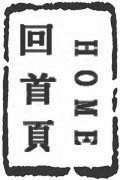
Basketball Glitch
篮球小失误/
n/a
CHEARS: False
EARS: False
CMT: False
EARS2 Encyclopedia: False
CHEARS:
EARS:
EARS 2:
What sounds can you recognise?
Bouncing balls
Squeaking shoes
Spectator noise
Notice how these three sounds capture the basic essence of a game of basketball
But this is not a naturalistic recording of a basketball game
The composer is manipulating and organising the real sounds to create interesting sound qualities and a more abstract sense of spaces
sometimes using small sounds, repeated many times to create longer streams of sound
or s t r e t c h i n g them
The composer also uses automation to change the pattern of loudness
Listen to how the composer paces the next section
gradually slowing down the cycling stream of sound
until...
We enter a brief chaotic and dynamically intense section
that transforms into sounds of the spectators
We are now placed into the crowd and given a different sonic perspective
Listen very carefully to how the bouncing ball sound 'mimics' the drums
The composer is utilising rhythmic elements in this section - creating cyclic gestures with multiple sound streams
In this composition the recorded sounds are used mostly for their sonic qualities
However... the composer still chooses to remind us, at various points throughout the composition, where the sounds really come from
Listen to the interplay of granular textures and streams, their movement through the stereo field, and the use of dynamic envelopes
This section introduces a tonal quality, based on the tonal elements of the spectators' horns
Recognisable sounds are beginning to emerge again
as the composition comes to a close
参看其它/See Also
术语翻译/Terms Translator
术语校对/Terms Proofreader
术语顾问/Consultant to terminology
参考文献/Bibliography
讲座/Lecture
评论/Comments
发表评论(预先注册)/Add comment on this term(members ONLY)